Generative AI: ChatGPT
By: Academic Technologies
Posted on: January 31, 2023
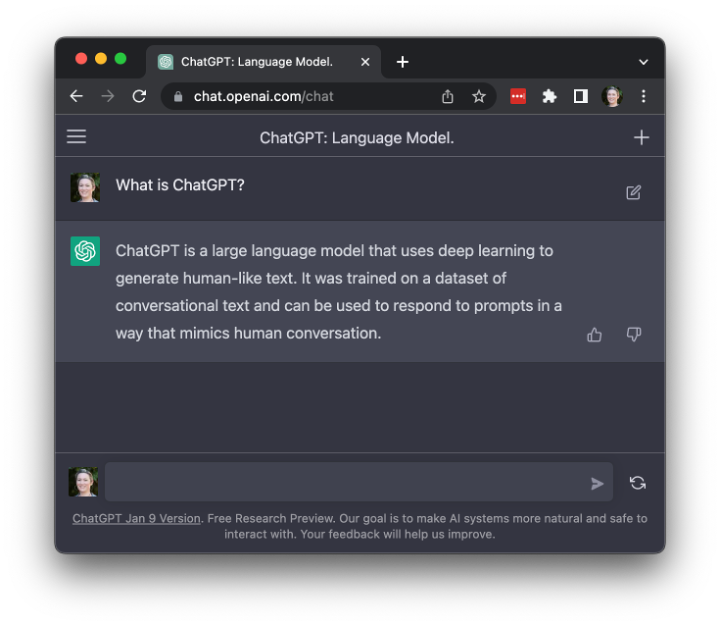
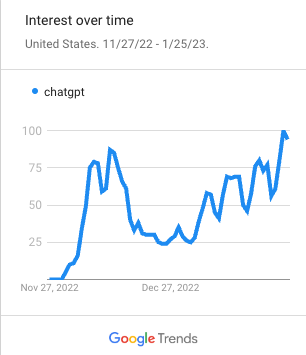
Google Trends shows the rapid increase in interest in the term “ChatGPT” since the end of November. This trend aligns with the announcement on November 30, 2022 from OpenAI regarding a publicly available tool called ChatGPT. This tool falls into the category of generative artificial intelligence (AI).
What is generative AI? Great question, McKinsy & Company describes it as algorithms (such as ChatGPT) that can be used to create new content, including audio, code, images, text, simulations, and videos. OpenAI demonstrates the recent breakthroughs in the field that have the potential to flip the way we approach content creation on its head.
Our UIT – Academic Technologies team, is positioned well to be able to address generative AI from a holistic perspective. We recognize that ChatGPT is just one player in the larger field of generative AI. Blurring the boundaries of the daily use of technology in teaching and learning with the never-ending advancements drives our curiosity to find ways to apply these advancements while aligning pedagogy with our partners in the Center for Teaching & Learning. We have been exploring ChatGPT specifically since it was announced. We are identifying ways to use it productively while staying within the bounds of ethics and morals we use to hold ourselves accountable.
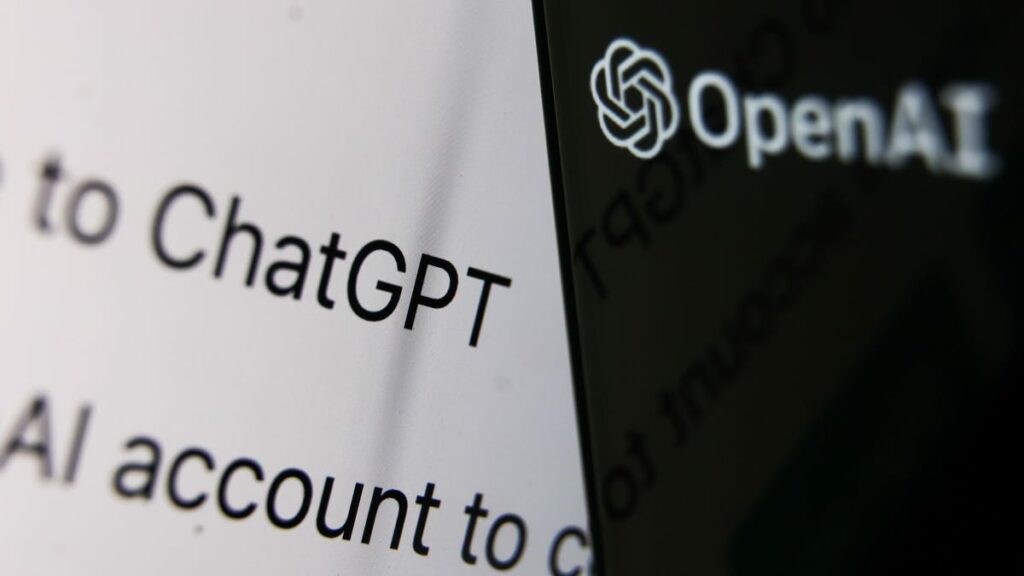
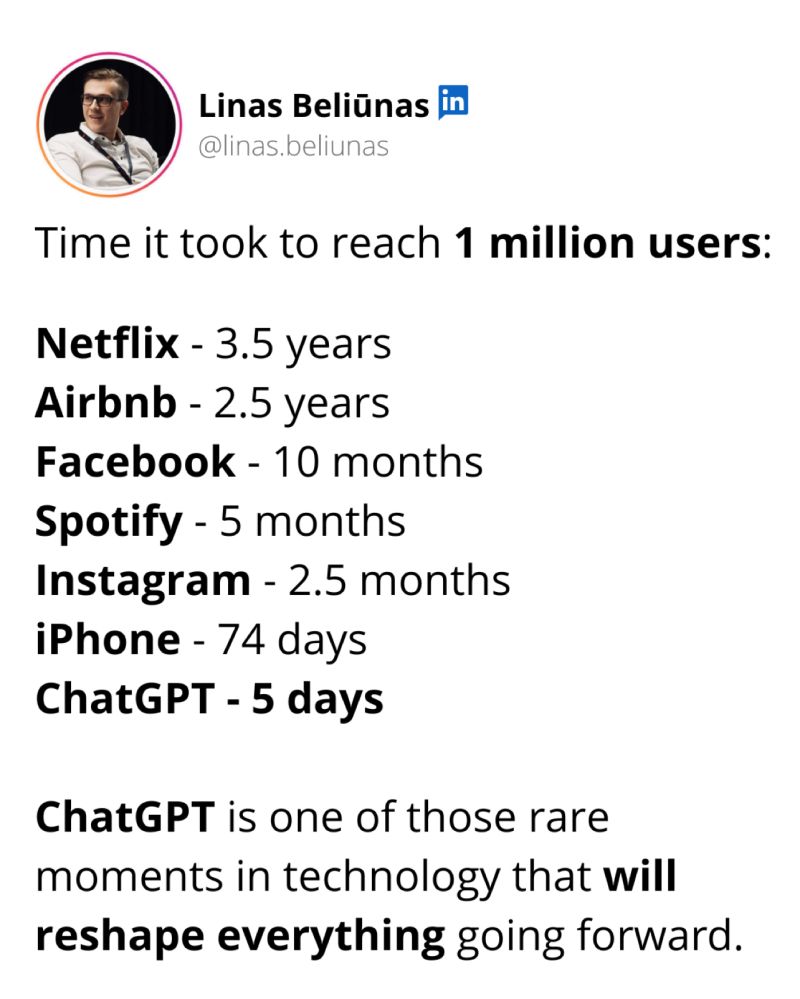
As technology leaders at Oregon State University, we are participating in the recently announced ChatGPT task force set up by the Office of Academic Affairs to provide pedagogical guidance in the weeks ahead. My peer, Ian Cavalier – Ecampus Assistant Director of Web and IT, and I are co-presenting to the IT Coordination Team on what generative AI is and the pros/cons as we see it today. Our staff are finding ways to challenge ChatGPT daily with prompts to see how it replies as well as gathering information on the tool from our peers at R1 institutions. The hand on experience allows us to speak with a high level of understanding of the tool, providing some calmness in the excitement around the tool.
Experience brings us back to the lessons learned and opportunities identified with the release of previous disruptive technologies. What do we know now and what can we leverage in our reaction to a new tool such as ChatGPT based on recent history?
30 years ago, we experienced the first search engine for the web, it was primitive, but it was there. By 1995 we had several search engines competing for popularity. Now, what did higher education do at that time? Did we limit the resources to only library materials that were purchased by the institution and deemed reliable for referencing? Or did we adapt and work with students to understand that not everything is a reliable source? Ask yourself, when did you change your perspective on Wikipedia pages? (I admit, I used it as a source in early 2000s)
Companies have been creating plagiarism detection to combat the copying of material into assignments and exams. While that is an easy out, we also must identify ways to co-exist with technological disruptors. Exploring student conduct code language and including it in a syllabus is important. Dr. Inara Scott, OSU College of Business, included this recommendation in her recent blog post on the topic.
From an IT perspective, I am not yet ready to suggest students use the tool for assignments. This may not be a popular opinion out of the gate but hear me out. There are two items that are reasons to pause. First, how often have you gone to the OpenAI website and received a message that the system is at capacity? With ChatGPT as a commodity tool, with no enterprise level support from the university, there is no guarantee that the student will be able to access the tool in time to complete the assignment. Second, security. The Office of Information Security at OSU reviews all enterprise tools for specific security concerns. These include identifying how the system is logged into, what data is captured when using the system, and how it is stored. Keeping this in mind, most users just click “accept” for the terms and conditions to gain access to the tool.
Our stance today, two months after the announcement of ChatGPT, is to explore this new tool. Have fun with it, try to push the boundaries and check the accuracy of the replies. This will help you in deciding what are your best possible use cases and enable you to provide feedback in open forums about the policies being developed at OSU. Wait a moment before making it an assignment, the capacity has not kept up with the demand. Consider the alternative of discussions with students either in class or Canvas around what the tool is and what it means to them. They are on the steps of a disruptive technology that will change their future and more than likely have opinions they are willing to share.
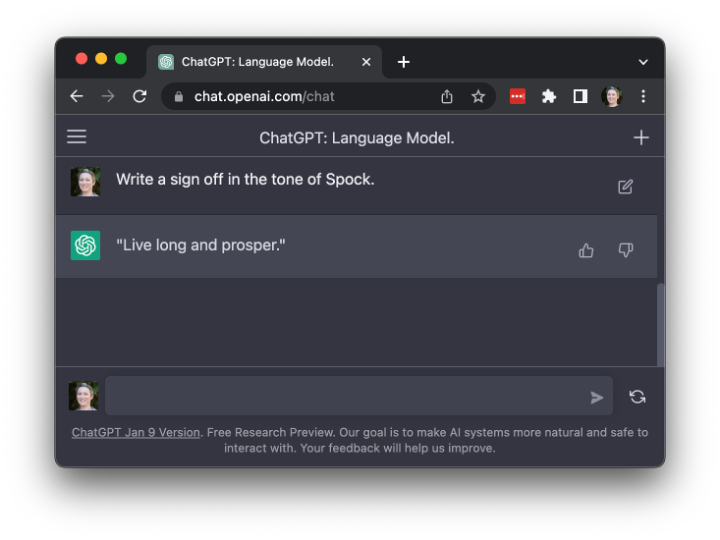
Recent Posts
Streamlining Digital Signage
In today's fast-paced world, the education sector is continually evolving to meet...
Read MoreSummer Projects in Teaching and Learning Spaces
We are pleased to share some of the highlights of our Classroom...
Read More


